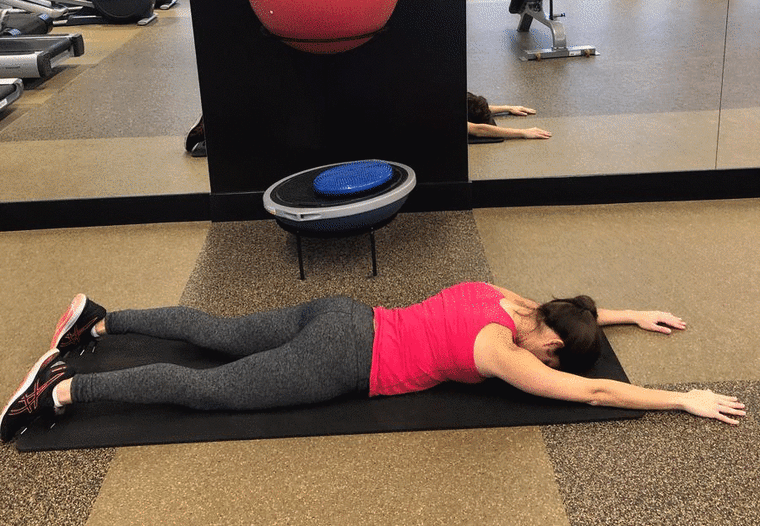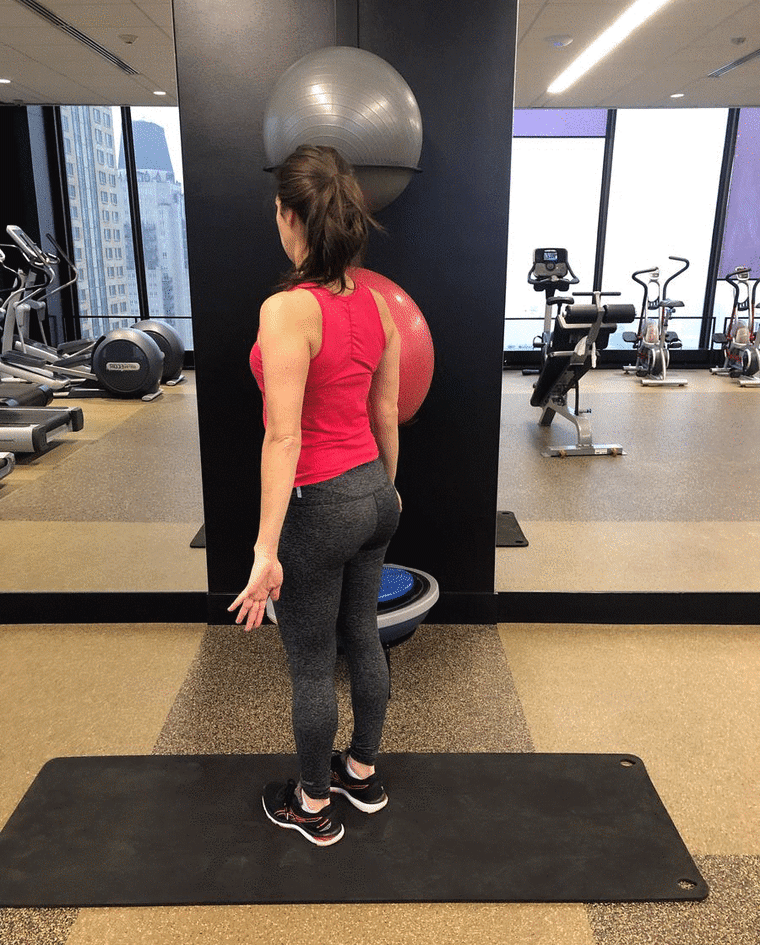Starting a new workout routine can be intimidating, but hopping on a treadmill is easy enough — after all, you’re doing a movement that you are familiar with. But venturing into the weight room is a different story. For those who haven’t lifted weights before (or who are a little rusty), you must research exercises, learn the proper form, and oftentimes work on creating a muscle memory before your body feels 100 percent comfortable performing them.
Research shows that it’s worth the effort. When done regularly 2-3 times a week, strength training builds muscle strength and mass and preserves bone density. Additionally, it has the ability to reduce the risk of osteoporosis and the signs and symptoms of chronic diseases like heart disease, arthritis and type 2 diabetes.
While strength training is important and has a ton of benefits, it’s also easy to do incorrectly. So while I wholeheartedly encourage people to include it in their routine, I also can’t stress enough how important it is to ease into it. I see the mistakes first hand as a personal trainer. What’s worse is that a lot of these mistakes aren’t just in one movement: they’re repetitive habits that people have picked up over the course of their lives and simply don’t realize.
I’ve personally suffered from back issues, knee pain and feet issues from improper form before I was fully educated as a trainer. In addition to the techniques I’ve used for over a decade to coach clients to ensure they avoid injury and get the most benefit from each exercise, I’ve also tapped a few other trainers and experts to give us their top tips for safely building strength and getting the maximum results from your workouts. Here is the consensus on the most common mistakes — and how to correct them.
Mistake: Going Too Heavy with Weights
When you're ready make a dent in those fitness goals, it can be easy to start off with a lot of ambition and reach for a heavy weight. However, less is more when it comes to easing into a strength-training regimen. A big mistake is walking into a gym and picking up dumbbells that are too heavy, or adding too much weight to machines. Kristina Alai, fitness trainer at The Bay Club Company, says, “Many people think that going heavy with weights will make you stronger,” but on the contrary, many trainers agree that less is more. According to personal trainer Christy DiLullo, the better your technique gets, the less work you have to do to get the desired effect. “Two quality sets with great form and high intensity is worth more than four sloppy sets,” she says.
Two quality sets with great form and high intensity is worth more than four sloppy sets.
The Risk: If you’re lifting weights that are too heavy, you may recruit other muscles to pitch in when the targeted muscle just doesn’t have the strength to do the exercise. Furthermore, your form will probably suffer. “This is a recipe for injuries and will not be the quick fix to make you stronger,” Alai says. Plus, your muscles aren’t getting an increased benefit from lifting with heavier weight if you’re using improper form. “If you are just swinging weight around in a way that is uncontrolled, your muscles are not really working. You must control the weight in order to form that mind-muscle connection,” says Fitplan’s trainer Scott Mathison. Once you can control an exercise at a set weight, and complete 12-15 reps without reaching complete muscle fatigue, you can decide if you’d like to increase the weight or increase the repetitions.
The Fix: Instead of heading over to the weight rack right away, try starting with body weight exercises. For example, start with squats or leg lifts instead of using a machine. Once you’re able to master the proper form of a squat, then you can progress to a leg press machine. For the squat, start with your feet as wide as your shoulders, pull your naval in towards your spine, and bend the knees. Lower down as if you’re sitting onto a chair, reaching your glutes back and keeping your knees over your ankles (not further forward than your toes.) Press down through the heels to press yourself back up to standing. Once this feels natural and like you’ve mastered it (you can do 3 sets of 10 reps in your workout), then you can progress to a leg press machine. Start at a lower weight (like 30 pounds) and work on getting the form right. Once you feel comfortable, then you can start increasing the weight on the machine.
For your upper body, practice holding planks instead of using dumbbells to work your arms and back. Although, this is the one scenario where beginners may want to start with weights. Ideally, Alai recommends a balanced combination of weights and body weight as the optimal way to get stronger. If planks or other body weight exercises for your upper body seem too challenging, then start out with light weights and arm exercises. Start with lower weight (like 3- or 5-pound dumbbells) and focus on doing more reps at less weight. For example, instead of grabbing a 10-pound dumbbell for bicep curls and doing 10 repetitions, grab the 5-pound dumbbells and do 15 reps. When doing a bicep curl, it’s important to keep the elbows hugging in towards your sides. Often times with too heavy of weights, you can begin thrashing the arms and pulling the elbows away from the sides because the weight is too heavy to properly control. Keep your form in check by exhaling on the exertion (as you curl the weight up) and inhaling on the release (as you lower the weight back to the starting position.)
Mistake: Neglecting Your Posterior Chain
Many of our daily positions encourage us to hunch forward. Sitting at a desk at work, texting on the phone, playing with kids, etc. It makes sense then that we need to strengthen the back of our bodies to help correct this positioning, but often times it’s the exact part of our bodies that gets neglected. Jonathan Tylicki, director of education for AKT and certified personal trainer, says that with strength training, “People commonly only train large muscles that they see (chest, abs, quads) and end up neglecting their posterior chain and smaller muscle groups.”
The Risk: Not only will your body be imbalanced, but according to Tylicki, this can also leave other muscles weak and de-conditioned. Eric Owens, co-founder of Delos Therapy, says, “Only training upper body and no legs will lead to an imbalance. It’s important to train the upper and lower body equally along with balancing out pushing and pulling movements.” In fact, Becca Capell, a trainer at iFit, says poor posture and possibly blowing out your ACL are risks that come with not training the back of your body, too.
The Fix: Make sure that you’re doing exercises to strengthen the back of your body. For example, lat pull downs, cobras and planks interspersed throughout your workout are a great way to start. You can also focus more on engaging your glutes and hamstrings in your lower body strength training moves, like lunges and squats. When you stand up at the top of these moves, press down through your heels to fire up the posterior chain starting with your legs up into your glutes.

You’ve probably seen or done a Superman on the floor in a group fitness class. This is an excellent way to engage the posterior chain. Lying down on your stomach, pull your naval in towards your spine and reach your arms in front of you. Keep your feet as wide as your hips, and your arms as wide as your shoulders. Relax your shoulders down even though your arms are in front of you. Exhale and lift your legs and upper body off the ground, hold for 3 counts, and then inhale as you lower back down. Make sure to keep your head down so that your neck is in line with your spine. Look at a spot on the floor about 1 inch in front of you to maintain this position.

Another great way to work the upper half of your back body while standing is by simply rolling your shoulders back, and reachuing your arms back behind you as if you’re trying to give someone behind you a lower high five. Pull your naval in towards your spine, and give 10 high fives. Squeeze your shoulders together as you press your arms and hands back. You can do this while you’re standing in line or while waiting for your coffee to warm up in the microwave.
Mistake: Moving Too Fast
If you’re short on time and trying to whip through a strength training workout, think again! Going too fast not only can sacrifice form, but also doesn’t give your muscles the best chance to build strength.
The Risk: Liana Hughes, personal trainer and coach on the fitness app, Gixo, warns that, “Momentum over muscle will not always produce the best results.” She says that if you don’t have good form and then you load an exercise, you’re building fitness on top of dysfunction. This can lead to repetitive misuse of muscles that can contribute to poor posture, back pain and muscle strains. If you think you’re strengthening your back with an exercise, but really you’re using so much weight that your traps and shoulders end up firing, you’re not only missing out on the full benefit of the intended exercises, but also you’re overusing the wrong muscles which can lead to poor posture, muscle tightness and an imbalanced upper body.
Ronnie Lubischer, CSCS, agrees that rushing through strength training can cause injuries and is less effective. “You should be able to control the movement both on the concentric and eccentric motions,” he says. For example, if you’re doing shoulder exercises with too heavy of weight, you could risk injuring your rotator cuff. If you rush through lower body moves with improper form, you could risk a torn ACL or a sprained ankle. When you move slower, you’re able to hone in on the specific muscles you’re working on engaging and end up with a more effective workout.
The Fix: “Slow down and focus on your muscles moving you through a full range of motion in order to build strength,” Hughes suggests. “Go back to the basics and make sure you can do a movement with great form before you weight it! You’ll see that practice makes perfect.”
Another way to slow things down is to connect your breath with each movement. On the exertion of each exercise (when you stand up from a squat, or curl up for a bicep curl) exhale out through your mouth. And then inhale through your nose as you release the bicep curl down and when you lower down into a squat. Focusing on the breath will help with your mind-body connection and help set a slower pace. I encourage my clients to include a count with their breath. This then becomes like a moving meditation! When you’re doing a squat, breathe in for a count of 3 as you lower down, and then exhale out for a count of 3 as you come up. For more of a challenge, you can count to 3 as you lower down, hold for 3 in the squat position, and then exhale out for 3 as you come up.
TRY THESE FITNESS ROUTINES
- How to work your abs without neck or back pain
- 5 exercises you can perform anywhere, anytime
- A 10-minute cardio workout you can do at home
- 5 exercises that will strengthen your back and reduce pain
- 8 exercises trainers never do (and what to do instead)
Want more tips like these? NBC News BETTER is obsessed with finding easier, healthier and smarter ways to live. Sign up for our newsletter and follow us on Facebook, Twitter and Instagram.

